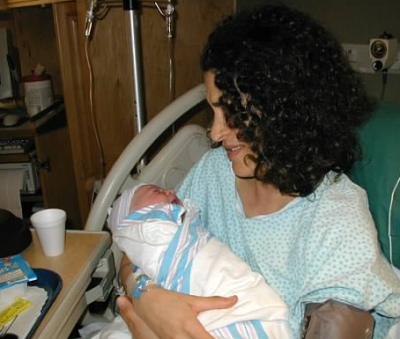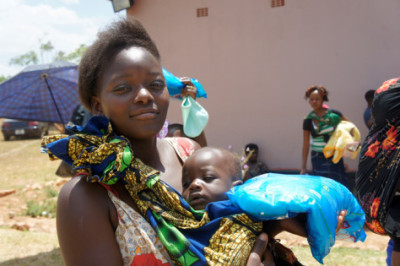I can’t believe that I had my first daughter 11-1/2 years ago. It feels like yesterday, and for some reason, the images are more vivid than when I had my second child a few years later.
It was an induced pregnancy, so we went in to the hospital rather leisurely on a week night. I laid on a table and was given medication to send my soon-to-be child a signal that it was time to come into the world. After nine months of carrying her around in my belly and readying the house and my life to include a new child, my husband and I were more than ready to welcome her into our lives.
Once the contractions started, the experience went from easy to difficult. Those pains were serious and I felt like I had been transported into another universe. She was born at 9am the next morning, and a new light came into my life.
However, she wasn’t brought over to me right away. She was having trouble breathing upon entrance and was instead whisked away by the doctors. For a few brief moments, we were afraid that something was wrong. But like with most babies in the U.S., she was okay and returned to me.
I have often thought about children in developing countries and whether they are given the same care and chance in life.
In 2000, world leaders adopted a series of ambitious goals–the United Nations Millennium Development Goals (MDGs)–including commitments to cut poverty by half, get every child into school, and dramatically reduce child and maternal deaths by 2015.
Today, millions fewer people live in extreme poverty than a generation ago, most children complete a primary education, hunger has been cut by over a third and there are 90 million people living today whose lives would have been cut short, had child mortality rates remained at 1990 levels, the baseline year for the goals.
However 18,000 children die each day from preventable causes and one million newborns die on their first day of life. Newborns now account for 4 out of 5 deaths of children under the age of five.
Unless we urgently start to tackle newborn deaths, there is a real danger that progress in reducing child deaths could stall and we will fail in our ambition to be the generation that can end all preventable child deaths.
With 500 days to go before the target date, it is vital that the world acts to make sure more countries can get on-track to achieve MDG4-the reduction of preventable child deaths by two thirds by 2015.
On August 18, 2014, Save the Children marked the 500 days left to meet MDG targets by showing the progress made in each country and also build a sense of urgency around the political action needed to meet MDG4 targets.
They want 500 Days to be the starting point of our push at the UNGA meetings in September where we will highlight the urgent need for more trained and skilled health workers critical to saving newborns and mothers as well as the Race for Survival in October with its theme of the “hardest to reach” highlighting the tough living conditions many children face and the lack of access to quality care. It’s important to remember that:
- Each day an estimated 800 mothers and 18,000 young children die from largely preventable causes.
- In the time left to the MDG target we need to accelerate progress toward achieving MDG 4.
- More than 1 million babies die on their first and only day of life across the world, and 2.9 million in their first month.
- The newborn crisis is much bigger than we may think, with a staggering 1.2 million stillbirths occurring during childbirth
- More than half of these maternal and under-fives deaths take place in locations beset by a high risk of conflict and/or natural disasters.
- 40 million women give birth without any skilled help – that’s more than 100,000 women every day. Even more dramatically, 2 million women a year are entirely alone when giving birth.
- Investing in mothers works. Maternal deaths and child mortality in the most challenging countries of the world are being dramatically cut when efforts are made to improve services for mothers and children.
We can stop this. Many of these deaths are preventable if the mother-to-be had a trained midwife to help them give birth safely. Newborn mortality rates can only be reduced through fairer distribution of essential health services and through universal healthcare access; this means making these more available to the poorest and most marginalized families, as well as to communities living in rural areas.
We must ensure that every mother, newborn and children under five has access to high quality health care; invest much more in women and girls and ensure their protection; and build stronger institutions and stronger health systems that provide universal health coverage, and provide for the most vulnerable, as well as promote early action, social protection, disaster risk reduction.
Disclosure: I’m a member of Moms Bloggers for Social Good and this post supports their MDG4 campaign.











 Follow
Follow





Good cause and well worth supporting.